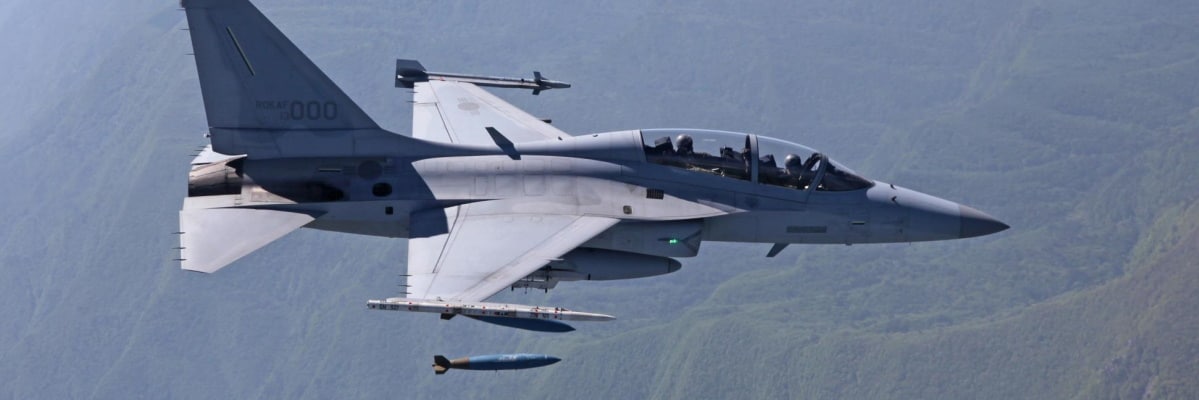In late July Poland signed a contract with South Korea for the supply of 48 KAI FA-50 combat aircraft. Supply for which our own Leonardo M-346 in its fighter variant was also on the line.
The news has remained relegated to specialized outlets, despite the implications not only at the Italian system level. Implications are on the European system as well, especially at a time when talk of a common defense and a European army has returned.
Poland's purchase of the South Korean fighter jets is part of what is South Korea's largest military supply ever. In addition to the 48 aircraft, the contract calls for the supply of 980 MBTs (main battle tanks) of the K2 Black Panther type and 648 K9 Thunder self-propelled vehicles. Of both armored vehicles, the first batch will be Korean-made; then they will be produced under license in Poland.
Checkmate to the European Union
This massive strengthening and modernization of the Polish military is framed in the critical situation triggered by the war in Ukraine. In the time of need, for a Union country, military supplies are made by a nation like South Korea, absolutely a global player from an industrial and technological point of view, but at the same time a nation with the size and population of an average European nation. And not particularly rich in natural resources (but with its own currency).
The supply of Korean weapons systems to Poland should not only be an occasion for reflection on the lost order for Italian industry. But especially about the European Union and a certain pro-EU rhetoric. That of greater integration among the various armed forces with a view to a common army. And that only the union of European nations would enable us to be global players.
The Korean plus according to the Poles
Rhetoric that is dropped precisely because of the reasons given between the lines by Polish Minister Błaszczak. With regard to the supply of FA-50 fighter jets, as with the supply of armored vehicles, not only did the possible employment effects on Polish territory (one of the classic motivations in this kind of supply) play a role, but also the fact that the South Korean production chain was less affected by the problems of logistic and supply chains than the Western one. The South Koreans were the only ones who could meet both conditions, as stated by Minister Błaszczak: "Other equipment manufacturers would not have been able to supply armaments of such quality on such short notice and with such extensive cooperation with the Polish defense industry."
Leonardo, the M-346 Master and Poland
Certainly as part of the Polish armed forces strengthening there was also room for Italian industry, albeit with a smaller order than the one to South Korea. In early July, Poland had formalized an order with Leonardo for 32 AW-139 helicopters. And the Polish Air Force already has 12 M-346 Masters for training its pilots, along with four aircraft on order.
M-346 which, in its category of advanced transonic trainer, can be considered state of the art, getting picked up even by the air forces of Israel and Singapore, nations that are very attentive to their armed forces. An attack variant similar to the one proposed to Poland has also been developed from the M-346 trainer. At present the order for this variant has been finalized by Turkmenistan; several countries are in advanced negotiations.
FA-50, the South Korean rival
The very fact that Poland was already using M-346s raised hopes that Leonardo could win the contract to replace the old Sukhoi Su-22s still in use. In the end, however, the contract went to the South Korean FA-50, an aircraft related to the F-16 fighter that the Polish Air Force already has in service.
The FA-50 is a light combat aircraft derived from the T-50 Golden Eagle trainer. Although nominally the M-346 and the TA-50 belong to the same category of advanced trainers, the TA-50 is a history unto itself. It was in fact developed by Korea Aerospace Industries with the support of Lockheed-Martin from their experience with the licensed production of the F-16 Fighting Falcon fighter. Korea Aerospace Industries itself was in fact almost born from scratch in the 1990s as a conglomerate of Korea's heavy industry and electronics titans. Going, with U.S. help, within five years from developing a two-seat turboprop to a trainer like the TA-50.
Deriving from the experience gained with the F-16 and having common design features, the TA-50 is larger and heavier than the M-346 and, despite being a single-engine aircraft, is supersonic. Thus in the FA-50 combat variant it was possible to install a 20 mm cannon embedded in the vehicle, while the combat variant of the M-346 can only mount it in an external pod. Cannon aside, the war load for the FA-50 is 3,740 kg on 7 points, slightly higher than the M-346's 3,000 kg. So the FA-50, while considered the derivative of an advanced trainer, is closer to the F-16 from which it is descended.
KAI KF-21 Boramae, an entry-level F-35?
But among Poland's reasons for opting for the South Korean aircraft may also be Seoul's new air force jewel, the KF-21 Boramae multi-role and air superiority fighter. This was stated by the aforementioned Minister Błaszczak: " Generally speaking, we are planning to purchase more F-35s or F-15s, and we are closely watching the progress made by our South Korean partners in working on the KF-21 Boramae.".
The KF-21 Boramae, while reminiscent in stealth forms of the F-35, is not considered to be a 5th generation fighter aircraft for all intents and purposes, as there is currently no inner weapons compartment (unlike the F-35 and 5th generation fighters). Weaponry on the outer pylons makes the KF-21 somewhat more visible than similar 5th generation stealth aircraft. As well, the KF-21 made its first flight in July 2022 and development is proceeding apace, so much so that it could enter service as early as 2026. This is after a long and troubled definition phase that began in 2001 and was only completed in the mid-2010s.
An aircraft like the KF-21 Boramae, while not on par with the F-35, well represents South Korean design and industrial capability. Meanwhile, Europe is fully reliant on the Lockheed-Martin F-35, and the cooperation and development programs in place are all for sixth-generation fighters: these are the Anglo-Italian-Swedish BAE Systems Tempest progam, whose first flight could be expected in 2027 and entry into service by 2035; and the even more remote French-German Future Combat Air System program for which a demonstrator is expected in 2027 and entry into service 2040.
More contracts in Europe for Korea Aerospace Industries?
For the nearly 5th-generation KF-21, Korea Aerospace Industries is already in the process of defining a possible supply to Indonesia, while Polish interest for now is limited to the minister's passage at a press conference.
However, Korea Aerospace Industries is beginning to project itself into the European defense market. In October 2021, a letter of intent was signed for a supply of FA-50s, the same ones intended for Poland, to Slovakia as well. And in 2018, a possible "swap" with Spain had been floated: the Iberian Air Force would have traded four to six Airbus A400M heavy transport four-engine aircraft in exchange for a batch of TA-50 trainers. An option that would appear to have remained at the negotiating level.
An essayist and popularizer, his publications include "Alessandro Blasetti. The forgotten father of Italian cinema" (Idrovolante, 2023). And with Emanuele Mastrangelo "Wikipedia. The Free Encyclopedia and the Hegemony of Information" (Bietti, 2013) and "Iconoclasm. The contagious insanity of the cancel culture that is destroying our history" (Eclectica, 2020).









Scrivi un commento